
| myArmoury.com is now completely member-supported. Please contribute to our efforts with a donation. Your donations will go towards updating our site, modernizing it, and keeping it viable long-term.
Last 10 Donors: Graham Shearlaw, Anonymous, Daniel Sullivan, Chad Arnow, Jonathan Dean, M. Oroszlany, Sam Arwas, Barry C. Hutchins, Dan Kary, Oskar Gessler (View All Donors) |
| Author |
Message |
|
Sebastian Szukalski
|
 Posted: Wed 10 Jun, 2015 10:36 pm Post subject: A 19th century British Court Sword Posted: Wed 10 Jun, 2015 10:36 pm Post subject: A 19th century British Court Sword |
 |
|
This is a British cut steel court sword, of a similar style to the rather well known Poole court swords, of the Henry Poole company, who somewhat pioneered the tuxedo, and was closely involved with outfitting the royal court. The Poole swords are still available to rent for courtly outings today.
The cut steel sword was the official dress weapon of the British royal court during the 19th century, and was described as such: "A formal court sword with a cut-steel hilt and embellishments, with a black scabbard worn with a belt under the waistcoat"
This thus brings us to the design of this weapon: It is a court sword, and as the name implies was intended to be worn at court, and as such is no fearsome weapon, but one of elegance. It weighs only 444 grams, and has a narrow triangular cross section blade which is quite stiff. It balances two inches from the guard, and the blade is nickel coated.
The hilt itself is all steel, cut and polished into shape, and compared to some other period examples is quite simple. That being said, it took a large degree of skill to shape these hilts, and they sold for handsome sums, with many similar such swords selling around 15 pounds, well over 1000 pounds today.
This engraving in fine and detailed on the blade, and the blade is secured with a small hex nut, which I have not removed to check the tang. the scabbard fittings are steel, also cut and polished. The scabbard itself is leather, and has a triangular chape.
The hilt is marked "20", but no makers marks are visible. The fullered or rather hollow ground triangular blade resembles a modern foil or epee blade, and tracks very well in hand. The finger rings are decorative, being too small to use without unusually dainty fingers. There is very mild pitting to the tip of the blade.
This sword is very representative of it's type, with variation between examples largely being of the number of faceted pseudo-diamonds on the hilt. It is a robust and effective way to construct a hilt, however dainty the blade may be.
The condition of the scabbard leaves much to be desired, and I am truly resentful of the time I had the opportunity to purchase a Poole sword of very good condition and missed the auction due to a power outage which lasted nearly a week. Forever more I shall blame bad weather for my misfortunes in seeking antique swords.
APOLOGIES FOR THE BLURRY STRING IN THE PHOTOS - MY CLOTHING GOT IN THE WAY.
NEXT UP: A 1822 British officers sabre,
an Italian 1872 Infantry Officers sword,
and then a 1889 Prussian Life Guards Hussars' Pallasch,
followed by a "Frankenstien" of mismatched parts.
 Attachment: 76.1 KB Attachment: 76.1 KB
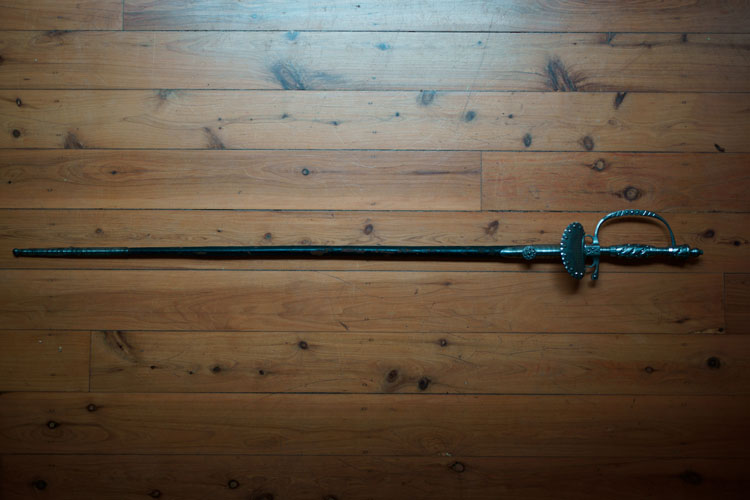
 Attachment: 96.01 KB Attachment: 96.01 KB
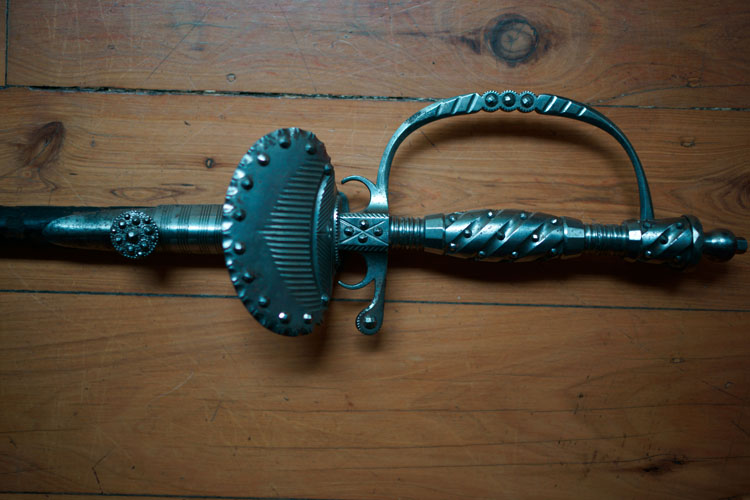
 Attachment: 74.72 KB Attachment: 74.72 KB
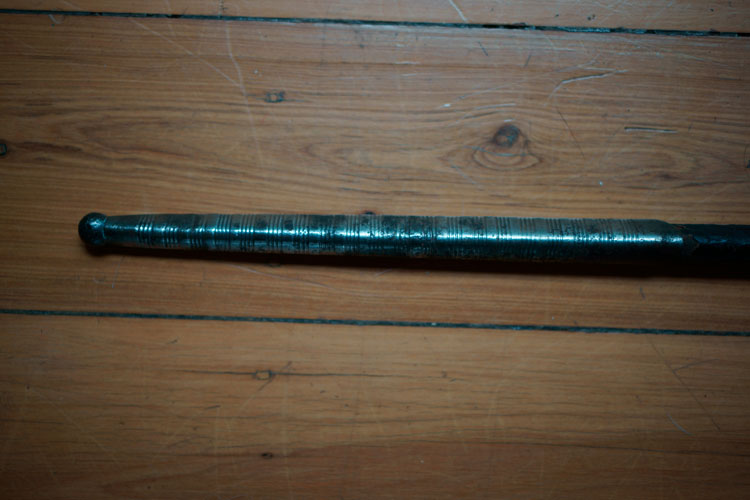
 Attachment: 85.48 KB Attachment: 85.48 KB
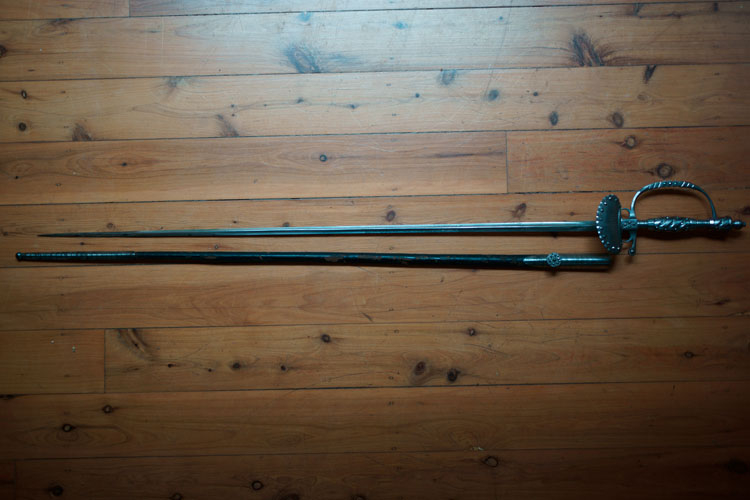
 Attachment: 77.62 KB Attachment: 77.62 KB
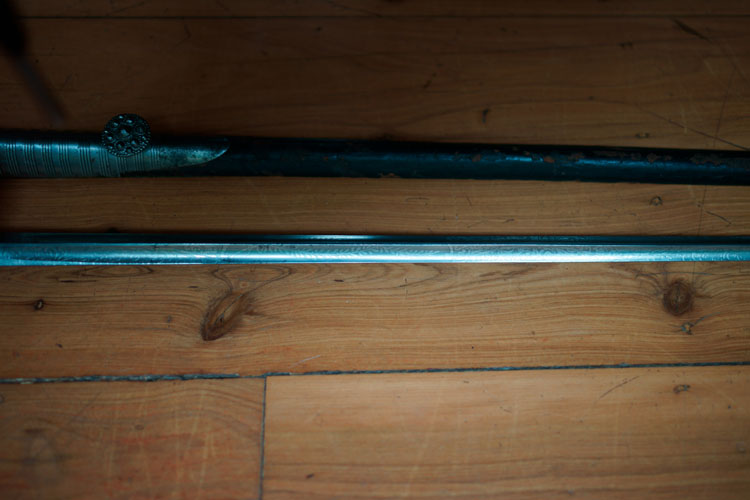
 Attachment: 68.92 KB Attachment: 68.92 KB
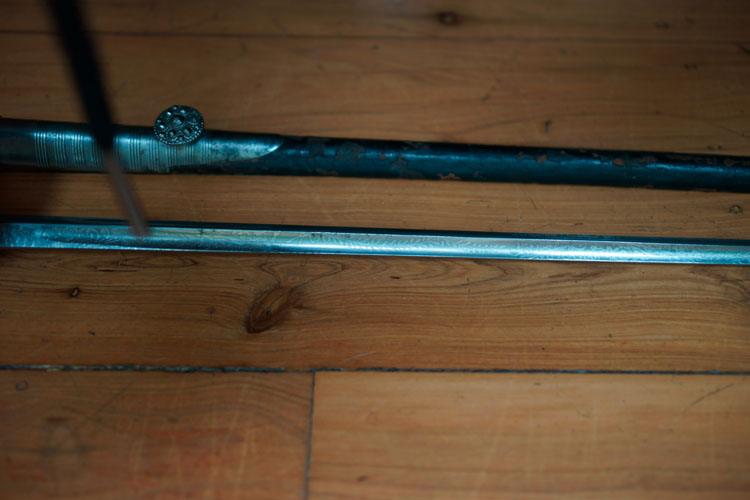
 Attachment: 85.16 KB Attachment: 85.16 KB
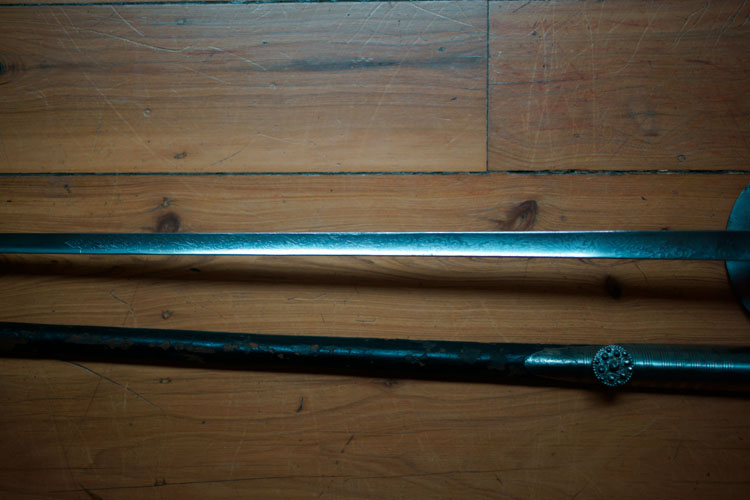
 Attachment: 58.52 KB Attachment: 58.52 KB
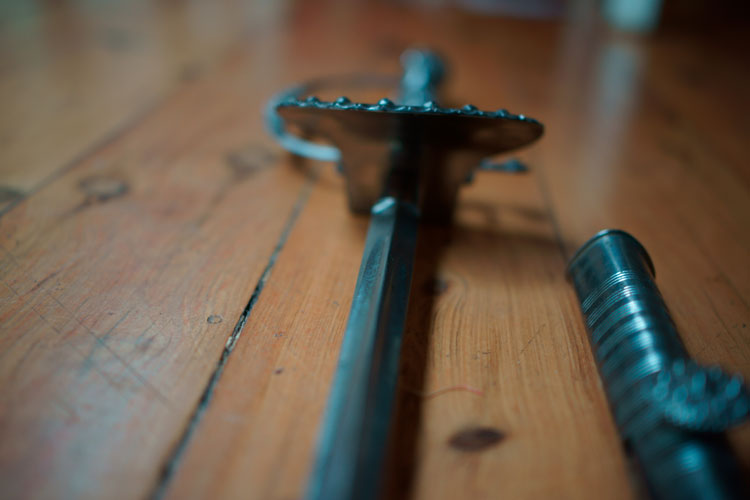
 Attachment: 74.11 KB Attachment: 74.11 KB
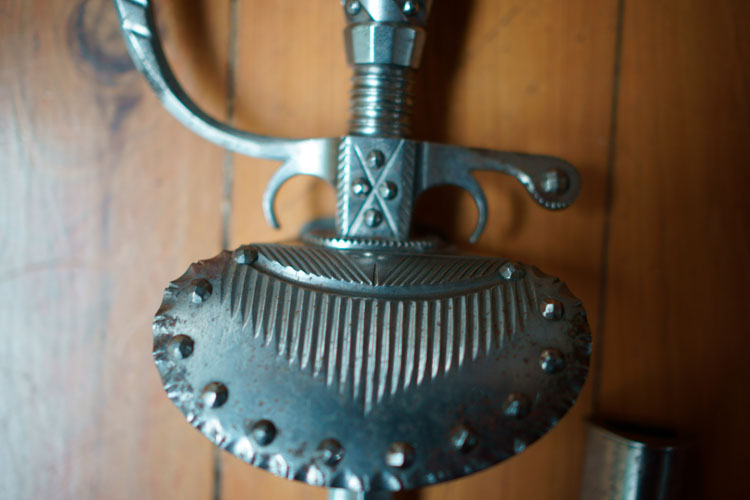
|
|
  |
 |
|
Ben Sweet
|
 Posted: Wed 10 Jun, 2015 11:21 pm Post subject: Posted: Wed 10 Jun, 2015 11:21 pm Post subject: |
 |
|
I came across this one 2 years ago at the Antique Arms and Armor show in Las Vegas.. I only got a few hilt pics and dont recall what the rest was like, but the hilt was a beauty...! Congrats on yours!

|
|
   |
 |
|
Niels Just Rasmussen
|
 Posted: Fri 12 Jun, 2015 9:23 am Post subject: Posted: Fri 12 Jun, 2015 9:23 am Post subject: |
 |
|
The knuckle guard is really special (on both swords) with it's three connecting sprockets?, spur-rowels?
If sprockets - the choice of a man involved in industry?
If spur-rowels, why 3 of them?
Maybe it is a Poole company-trademark?
|
|
  |
 |
|
Jonathan Hopkins
|
 Posted: Fri 12 Jun, 2015 11:01 am Post subject: Posted: Fri 12 Jun, 2015 11:01 am Post subject: |
 |
|
|
As a collector I try to stick to fighting swords, but I can't help liking these cut steel court swords. They seem like they might be serviceable as small swords. At least they are attractive. I am looking forward to your next sword.
|
|
  |
 |
|
Isaac H.
|
 Posted: Mon 06 Jul, 2015 11:03 pm Post subject: Posted: Mon 06 Jul, 2015 11:03 pm Post subject: |
 |
|
Reviving this thread, perhaps. myArmoury needs more smallsword discussion! Really, the smallsword was in many senses , the height of the sword in society.
Beautiful little sword , Sebastian ! Not the most elegant smallsword style, but something very artistic all on its own. Can't imagine how labor intensive it would be to embellish steel like that using historical tools. Do you have any other smallswords in your collection?
In regards to the atrophied finger rings (or pas D' anes ) , dainty hands or not, the use of looping a finger through one of these had long since fallen out of fashion by the 19th century. In fact, it is a definite pattern from 1700-1800 you can see the finger rings getting smaller and smaller the closer you get to the 19th century, until they disappear entirely. Most 18th century smallsword masters (such as Angelo) teach against gripping the sword in such a manner. It affects the movement of the sword, and more practically, several of the gentlemanly disarms taught in the 18th century schools would very easily break off the finger inside the loop. Ouch.
The 'sprockets' on the knuckle guard are odd to me as well... perhaps this is steampunk way before steampunk was cool? It even has rivets, haha.
I can't help but notice also , on the photo that Ben posted of that sword at the show in Las Vegas... the tag. Reads "Small Sword made by John Thomsen 1670 - 1672 Glasgow " 150 years off in dating the sword ! .. it's not that hard. How would one conclude that sword came from the 17th century? Perhaps John Thomsen was just a futuristic visionary on fashion statement and the evolution of the sword ? One would hope to see better knowledge displayed at an event catering to the discriminating collector.
Wounds of flesh a surgeons skill may heal...
But wounded honor is only cured with steel.
We who are strong ought to bear with the failings of the weak and not to please ourselves.
Each of us should please his neighbor for his good ,to build him up.
Romans 15:1-2
|
|
   |
 |
|
|
You cannot post new topics in this forum
You cannot reply to topics in this forum
You cannot edit your posts in this forum
You cannot delete your posts in this forum
You cannot vote in polls in this forum
You cannot attach files in this forum
You can download files in this forum
|
All contents © Copyright 2003-2025 myArmoury.com — All rights reserved
Discussion forums powered by phpBB © The phpBB Group
Switch to the Basic Low-bandwidth Version of the forum
|

